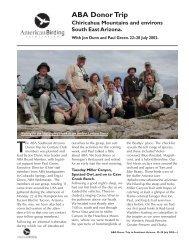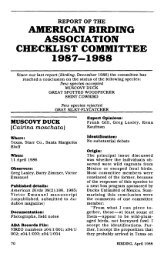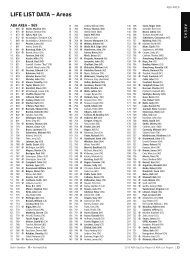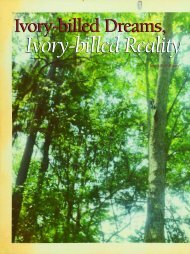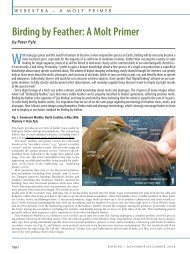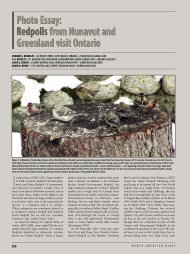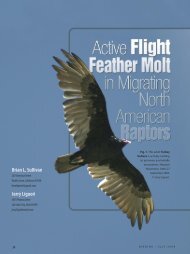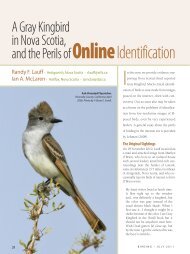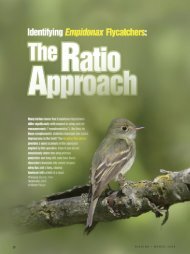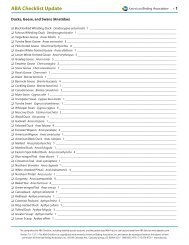Subspecific Identification of the Willet Catoptrophorus semipalmatus ...
Subspecific Identification of the Willet Catoptrophorus semipalmatus ...
Subspecific Identification of the Willet Catoptrophorus semipalmatus ...
- No tags were found...
Create successful ePaper yourself
Turn your PDF publications into a flip-book with our unique Google optimized e-Paper software.
Fig. 10 (above). Juvenile/non-breeding Western (left) and Eastern (right) <strong>Willet</strong>s. Inflight, Eastern looks more compact, with a shorter body, with slightly narrower, <strong>of</strong>ten more angledwings, and with quicker wingbeats. Western looks somewhat more elongated, with adeep-keeled or heavy-chested look. Although <strong>the</strong> legs are longer in Western, foot projection isabout <strong>the</strong> same due to its longer body. As on standing birds, bill shape is one <strong>of</strong> <strong>the</strong> best clues.Eastern is darker and browner overall and <strong>of</strong>ten has more-extensive dark mottling along <strong>the</strong>flanks. Western looks paler and grayer overall, with paler upperwing coverts and <strong>of</strong>ten whiterlookingflanks that contrast more with <strong>the</strong> black wing markings. Both subspecies show greatvariation in wing-stripe thickness, to <strong>the</strong> point that variation in Eastern is completely overlappedby variation in Western. However, Western’s wing stripe averages broader, and manyWesterns show distinctively broad wing stripes. Pen-and-ink on paper by © Michael O’Brien.Fig. 11 (right). Worn breeding Western <strong>Willet</strong>. The slim, fine-tipped, relatively dark bill;<strong>the</strong> long legs; and <strong>the</strong> long neck are distinctive. Birds in mid-summer show heavier markings,<strong>of</strong>ten approaching Eastern. Note <strong>the</strong> pale, neutral gray ground color to <strong>the</strong> upperparts, contrastingstrongly with <strong>the</strong> barring and subtly with <strong>the</strong> buff ground color to <strong>the</strong> breast. Barringon <strong>the</strong> underparts averages thinner, sparser, and paler than on Eastern, although <strong>the</strong> breastspotting is <strong>of</strong>ten more pronounced. North Carolina; early July 2005. © Michael O’Brien.Fig. 12 (below). Mostly non-breeding Western <strong>Willet</strong> (left) with worn breeding Eastern<strong>Willet</strong>s. This Western looks distinctively pale, largely because it has already acquired extensivenon-breeding plumage. It may be an early molting adult but, at this early date, is more likely afirst-summer (one-year-old) bird that never acquired full breeding plumage. Such birds <strong>of</strong>tenspend <strong>the</strong> summer in coastal areas, where <strong>the</strong>y look strikingly paler than <strong>the</strong> local breeding Easterns.Easterns usually hold most <strong>of</strong> <strong>the</strong>ir breeding plumage until <strong>the</strong> wintering grounds arereached. It should be emphasized that Easterns in full non-breeding plumage (including first-summerplumage) are undocumented in <strong>the</strong> U. S. North Carolina; early July 1998. © Michael O’Brien.WWW.AMERICANBIRDING.ORG47



